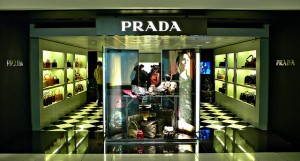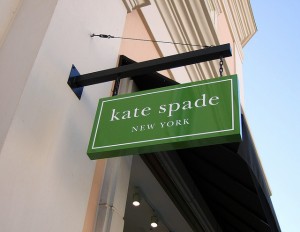Up, Up & Away Go Luxury Prices
There’s been a lot of talk recently about the rise in luxury price points, including the fact that a quilted Chanel handbag now costs about 70% more than it did five years ago (see here, here and here for more
examples and details). For now at least, the uber-wealthy aren’t balking at ever-higher prices for designer handbags, shoes, watches, jewelry and even apparel.
However, many aspirational shoppers that used to be able to splurge on a Prada bag every so often have been finding it much more difficult to do so. While aspirational shoppers are probably not particularly happy with the status quo, there is one group that is benefiting – contemporary brands.
A Little History on “Contemporary” Brands
Over a decade ago, brands that fit in the spot between “better” and “designer” were called “bridge” brands, but with the rise in designer brands, many of those bridge brands lost relevance and customers. But as designer brands started to rise in price (while the biggest price increases have been in the last five years, most designer items are significantly more expensive than they were around 2000), bridge brands came back – but with a new name: they are now “contemporary” brands.
Contemporary Brands: An “Aspirational” Option
Today, contemporary brands are an alternative to higher priced luxury designer brands, particularly in the accessories sector.
Let’s take the handbag category as an example. Instead of buying a $2,000+ bag by Chanel, Hermes, Prada or Gucci, shoppers can now more affordably splurge on Tory Burch, Marc by Marc Jacobs or Kate Spade at less than $1,000.
Other brands that benefit from higher luxury prices? Some big ones that are reaching up into the contemporary space including Michael Kors and Coach and even smaller, growing brands like Rafe, Longchamp, Rebecca Minkoff and Pour La Victoire.
Higher Luxury Prices = Contemporary Opportunity
Contemporary brands recognize the opportunity to lure shoppers to a more affordable, yet still aspirational form of luxury. Michael Kors, Kate Spade and Coach have all recently announced growth initiatives to capture more of this growing market in the handbag, shoe and accessory space. And it’s not just the contemporary brands seeing the potential in this space. Some designers are using their diffusion lines (e.g., Red Valentino, B by Brian Atwood) to take advantage of the contemporary market as well. Luxury price increases show no signs of slowing in the near future, which bodes well for aspirational contemporary brands – in accessories, apparel and more.

